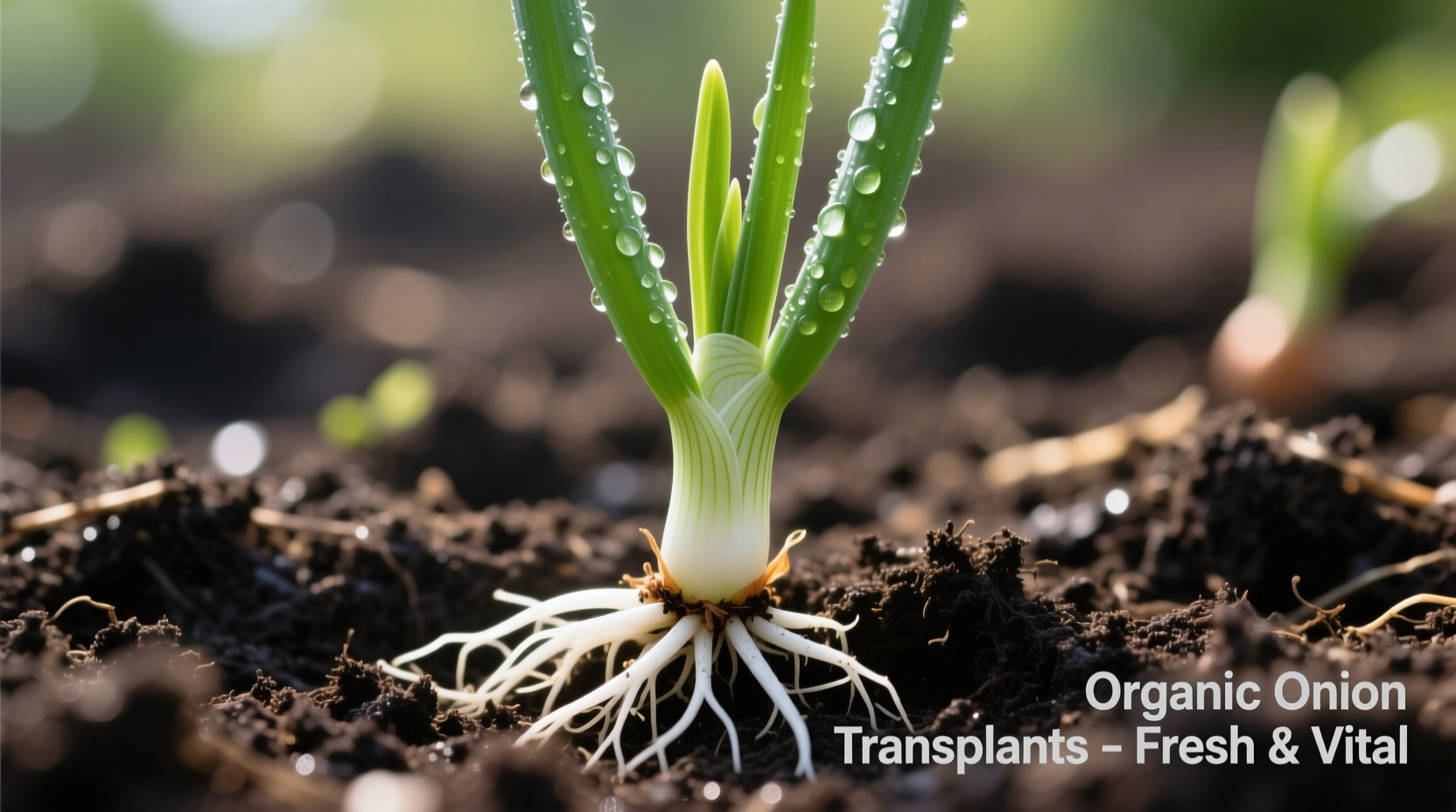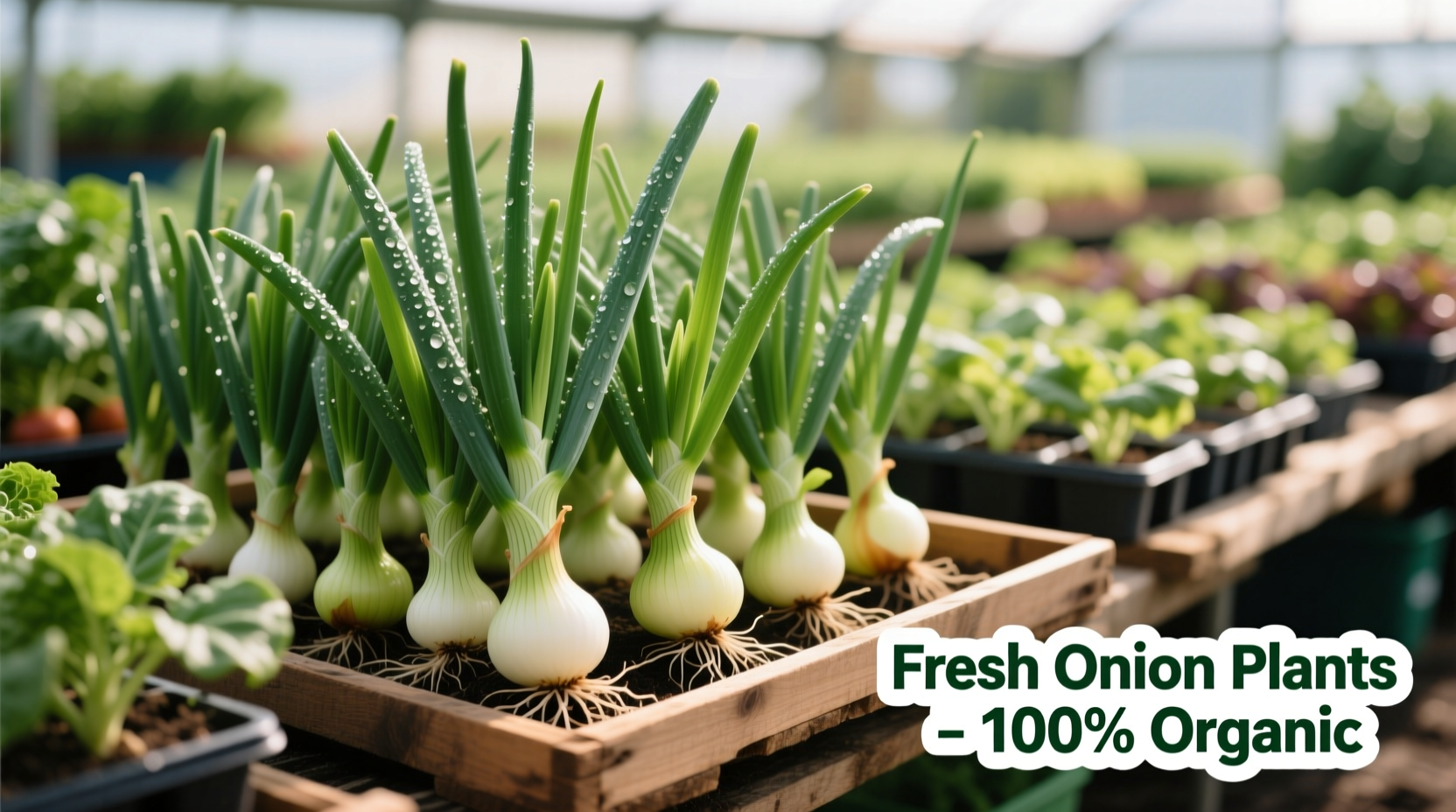When searching for onion plants for sale, you'll find multiple options including onion sets, transplants, and seeds from garden centers, nurseries, and online retailers. The best time to purchase is early spring for most climates, with varieties like Yellow Sweet Spanish, Red Creole, and Walla Walla available. Quality plants should have firm bulbs, healthy roots, and no signs of disease or mold.
Looking for onion plants to grow your own fresh supply? You're in the right place. Whether you're a beginner gardener or expanding your vegetable patch, understanding what to look for when purchasing onion plants makes all the difference between a thriving crop and disappointing results. This guide cuts through the confusion to help you select the best onion plants for your garden.
Understanding Your Onion Plant Options
Before you buy, it's crucial to understand the three main forms of onion plants available for sale:
| Type | Best For | Planting Time | Time to Harvest |
|---|---|---|---|
| Onion Sets | Beginners, short growing seasons | Early spring | 80-100 days |
| Transplants | Reliable yields, specific varieties | Late winter to early spring | 100-120 days |
| Seeds | Maximum variety selection, cost-effective | Indoors 8-10 weeks before last frost | 120-150 days |
According to the University of Minnesota Extension, sets offer the easiest growing experience but have fewer variety options, while seeds provide the widest selection but require more time and attention. Transplants strike a balance between convenience and variety selection.
Seasonal Availability and Timing
Timing your purchase correctly ensures your onion plants thrive. Onion plants for sale follow a predictable seasonal pattern:
- Late winter (February-March): First shipments of transplants arrive at garden centers in most regions
- Early spring (March-April): Peak availability of onion sets and transplants
- Late spring (May): Final opportunity to purchase for most climates
The USDA Plant Hardiness Zone Map determines your ideal planting window. In zones 3-5, purchase onion plants in late March to early April. Warmer zones (6-8) can buy from late February through March. Southern growers (zones 9-11) should look for short-day varieties available December through February.
What to Look for in Quality Onion Plants
Not all onion plants for sale deliver equal results. Examine plants carefully before purchasing:
Visual Inspection Checklist
- Bulb condition: Firm, dry outer skin without soft spots or mold
- Root development: White, healthy roots (avoid plants with brown, mushy roots)
- Shoot appearance: Green shoots should be crisp, not wilted or yellowed
- Packaging information: Clear labeling of variety, days to maturity, and growing requirements

Healthy onion transplants show no signs of disease or pest damage. The Oregon State University Extension Service warns that plants with premature flowering (bolting) indicators will produce smaller bulbs, so avoid any with flower stalks beginning to form.
Where to Find Reliable Onion Plants for Sale
While big box stores carry onion plants, specialty sources often provide better quality and variety:
Reputable Sources Compared
- Local nurseries: Best for regionally adapted varieties and expert advice
- University extension sales: Often sell disease-resistant varieties tested for your area
- Specialty seed companies: Wide variety selection with detailed growing information
- Farmers markets: Opportunity to buy from growers who can share firsthand experience
Avoid purchasing onion plants from sources that don't provide variety information or growing requirements. The USDA Agricultural Marketing Service notes that properly labeled plants indicate a seller who prioritizes plant quality and customer success.
Proper Handling After Purchase
How you handle onion plants immediately after purchase affects their performance:
- Store in a cool, dry place if not planting immediately (maximum 7 days)
- Keep roots moist but not wet during transport
- Never allow plants to freeze or overheat in your vehicle
- Plant within 2-3 days of purchase for best results
When planting, separate any clumped sets and ensure proper spacing (4-6 inches apart for bulb onions). The depth should be just enough to cover the roots with soil, leaving the top of the bulb slightly exposed.
Avoiding Common Purchasing Mistakes
Gardeners frequently make these errors when buying onion plants:
- Mistake: Buying the cheapest option without considering variety
Solution: Match varieties to your climate (long-day for northern regions, short-day for southern) - Mistake: Ignoring planting dates for your region
Solution: Consult your local extension office for optimal timing - Mistake: Purchasing plants with visible damage
Solution: Inspect carefully and choose only healthy specimens
Remember that onion plants for sale in late spring often represent end-of-season clearance and may not perform as well as early-season purchases. The University of Wisconsin Extension reports that late-purchased plants have up to 30% lower yield potential due to heat stress.
Getting the Most from Your Onion Plants
After planting, proper care ensures a bountiful harvest:
- Water consistently (1 inch per week) but avoid overwatering
- Apply balanced fertilizer when plants reach 6 inches tall
- Monitor for thrips and other common onion pests
- Stop watering when bulbs begin to swell for best storage quality
Most onion varieties reach maturity 100-120 days after planting. Harvest when the tops naturally fall over and begin to yellow. Cure onions in a warm, dry location for 2-3 weeks before storing.











 浙公网安备
33010002000092号
浙公网安备
33010002000092号 浙B2-20120091-4
浙B2-20120091-4